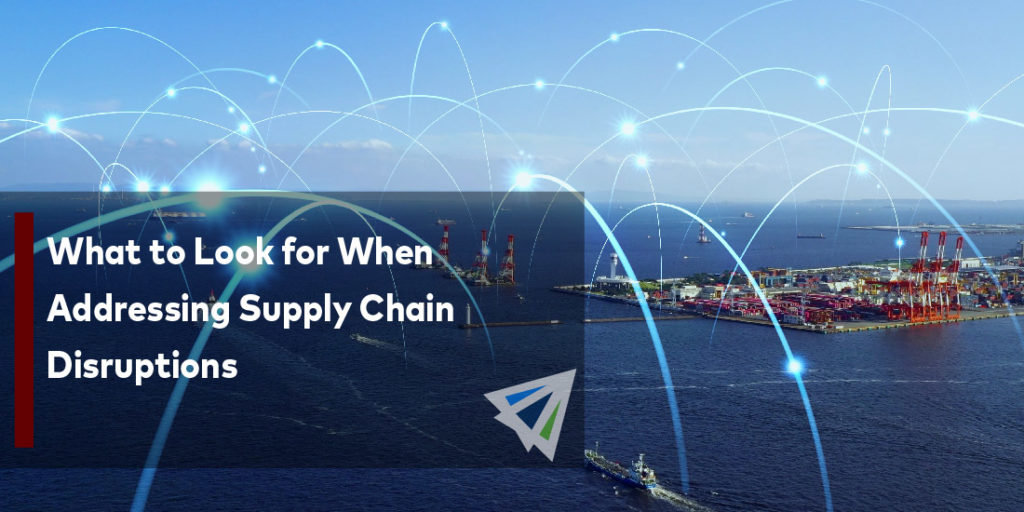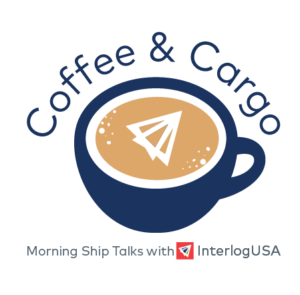Competitive Edge
May 4th, 2022
Stay Current with Interlog’s Weekly Newsletter:
Sign up for our next Coffee & Cargo webinar –> CLICK HERE
To watch last month’s webinar –-> CLICK HERE
Any topics you want discussed in our next webinar? –-> EMAIL US TODAY

Ocean Freight Market Update
Headlines
- Mediterranean Shipping Co. (MSC) becomes the first carrier to offer direct service from India to Philadelphia port. The service includes calls from the Indian ports of Nhava Sheva and Mundra. Information courtesy of the Journal of Commerce.
- Los Angeles and Long Beach ports will once again delay consideration of the “Container Dwell Fee” for another week, this time until May 6, the Port of Los Angeles announced on its website.
- The Port of Long Beach has completed construction of a rail project designed to increase efficiency of goods movement and reduce congestion on local roadways by shifting more cargo to trains, Splash 247 reports.
UPDATE: Notable U.S./Canada Port Congestion as of 05/03/22
- Vancouver: 53 Backlogged Vessels
- Houston: 47 Backlogged Vessels
- Norfolk/Newport News: 42 Backlogged Vessels
- Los Angeles/Long Beach: 41 Backlogged Vessels
- Baltimore: 25 Backlogged Vessels
- New York/Newark: 21 Backlogged Vessels
- San Francisco/Oakland: 18 Backlogged Vessels
- Savannah: 17 Backlogged Vessels
- Charleston: 11 Backlogged Vessels
Courtesy: MarineTraffic
IMPORT: Asia to North America (TPEB)
Recent Developments:
- China’s Labor Day Holiday began May 1 and will conclude May 4.
- Lockdown measures imposed in Shanghai and the subsequent impacts of them remain in play. For a closer look, check out last week’s newsletter.
- TPEB lanes see some semblance of supply and demand balance. Whether it will sustain is yet to be determined.
- Demand lowering post-Chinese New Year is an expected trend each year. With peak season approaching, typically demand soars. Couple that with other factors such as consumer behavior, economic trends, and Covid-related developments, future outlook is reasonably unclear.
- The usual suspects—severe congestion, deteriorating schedule integrity, port omissions, and blank sailings—remain contributors to an uncertain market.
Rates: Rate levels remain relatively elevated. Premium market remains strong.
Space: Space remains critical and is expected to stay tight.
Capacity: Capacity remains severely under.
Equipment: Equipment deficits remain critical.
TIPS: Book at least 4 weeks prior to CRD. Strongly consider premium service and be flexible as it comes to equipment and routing. Additionally, be in contact with suppliers to check up on any COVID-related developments that can affect production.
IMPORT: Europe to North America (TAWB)
Recent Developments:
- USEC congestion remains considerable.
- USWC ports remain significantly congested as well. However, wait times for vessels have cut down to 20 days at Los Angeles/Long Beach ports.
Rates: Rates levels remain elevated and are expected to increase during Q2 with GRIs and PSSs.
Space: Space is critical for USEC and USWC.
Capacity: Capacity for both North Europe and Mediterranean services remain gripped. Equipment availability at ports, however shortages are still being reported at European inland terminals.
Equipment: Equipment remains available at European seaports. However, inland terminals in Europe are still reporting equipment shortages.
TIPS: Book 5 or more weeks prior to CRD. Shippers are strongly advised to consider premium service for no-roll options and improved reliability for their cargo.
EXPORT: North America to Asia
Recent Developments:
- USEC remains the focus of ongoing challenges due to creeping congestion.
- Charleston port has been subject to vessel omissions.
- Diminishing schedule integrity is contributing to void sailings, delays, vessel cut-offs at ports, and challenging post earliest return dates.
- Vessel arrivals remain fluid for USWC POLs.
Rates: GRI activity (limited) announced for May.
Capacity: Available capacity remains fluid for USWC POLs.
Equipment: IPI origins remain adversely affected by deficits on containers and chassis. Primarily, a lack of rail equipment has become a predicament for the USWC.
TIPS: Book 4 to 6 weeks prior to CRD to secure equipment and vessel space.
Did You Know: The Port of Charleston recently decreased their number of vessels anchored outside their port
Just two months ago the Port had the most vessels at anchor on a major port along the USEC, with 27 anchored vessels outside the Port. Now, the Port has cut that to five anchored vessels outside the Port.
Source: Journal of Commerce
Freight News
In March - Steel, Oil and Plywood have helped lift the Gulf Coast ports, but Steel and other U.S. commodity imports are facing storage space shortages
Steel, Oil and Plywood volumes in March, helped propel the ports in the Gulf Coast to see increases. Here’s a breakdown of increases that Port Houston, Port NOLA, and the Port of Corpus Christi have seen.
Port Houston: The increase in container volume at the port, was due in part by the increased demand for steel tubular products used in the Texas oil and gas industry, officials say. The container volume at the port in March totaled 308,557 twenty-foot equivalent units (TEUS), which is up 4% over the same time last year, reports Freightwaves. Imports of steel have increased 72% year-over-year in March to 401,587 tons.
Port NOLA: Container volume has declined, but the Port saw an increase in breakbulk cargo – recording a 61% year-over-year increase in March with 253,057 tons, reports state. The reason the port has seen a decline in container volume is due in part of a shortage of cargo containers in recent months.
Port of Corpus Christi: The port saw growth in petroleum and crude oil in March; shipments of petroleum totaled 5.1 million tons in March – up 13% year-over-year increase, exports totaled 4.2 million tons for the month, Freightwaves says. Regarding crude oil in March, the port handled 8.7 million tons – a 28% increase from the same time last year. Exports of crude oil for the month topped 8.1 million tons, which is a 29% increase from the same period last year.
Steel and other U.S. commodity imports facing storage space shortages?
Yes, for importers that are bringing in high-grade steel and other U.S. commodities that require inside storage after vessel discharge, are being faced with some challenges because of extremely limited port warehousing space in several U.S. and Canadian ports, and can potentially sit at anchor for weeks or months at certain ports – the Journal of Commerce reports.
Ports in Europe could see a surge in container volume after China's lockdowns are lifted
Many are expecting ports in Europe, specifically the Port of Antwerp, to see a surge in container volume once China’s lockdowns get lifted. The Port of Antwerp has already been operating at maximum capacity, so as the lockdowns get lifted, this could be a relatively big problem for the port, the Journal of Commerce says.
Recently, there was the launch of a merger between the Belgian ports of Antwerp and nearby Zeebrugge – which was originally announced back in February 2021 – this will make the combined port of Antwerp-Bruges, the largest breakbulk ports in the world, the JOC reports.
What the Port of Antwerp-Bruges is expected to do
At the Port, extra capacity will be given by additional container terminals, the expansion of a new tidal dock, and the development of land within the existing Antwerp and Zeebrugge port area – this will provide an additional 7.2 million twenty-foot equivalent units (TEUs) to Antwerp-Bruges by the end of the decade, the JOC says.
In the first three months of 2022, the Port saw their first-quarter container volumes fall 11.6 percent year-over-year, the JOC says. Earlier in April, the Port chalked up the decline of container volumes, to disruption in container shipping and high import call sizes that caused operation challenges. That has made the operation of container terminals more difficult, according to the JOC.
Many are hopeful that with the addition of Zeebrugge, it will provide much-needed space to Antwerp and will help to ease space constraints once the lockdowns in China begin to lift.
Sign up for our
industry answers
Our team works to provide valuable, unique, and relevant content to assist you in finding solutions. Sign up now.

